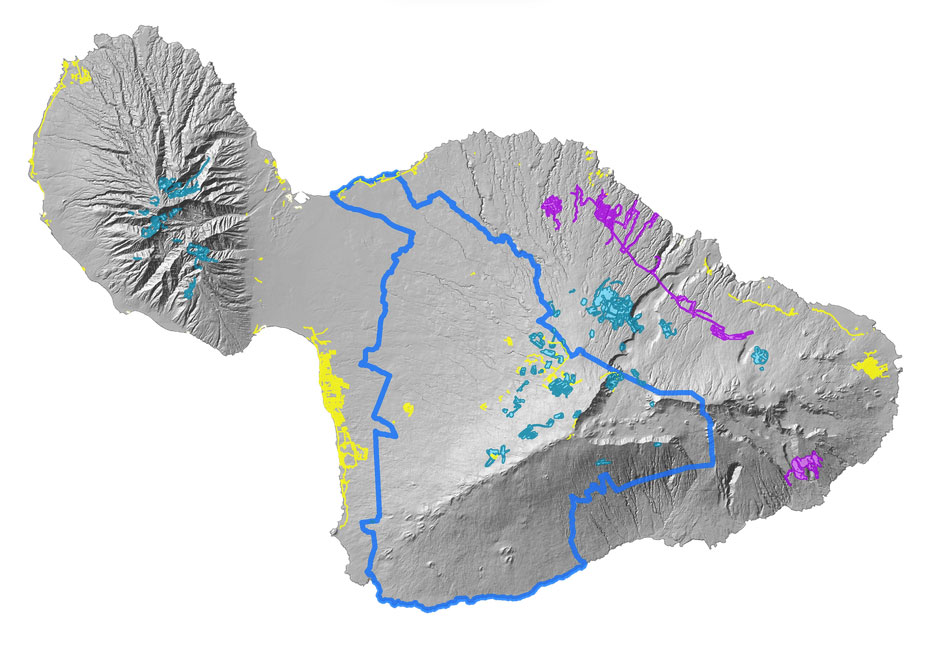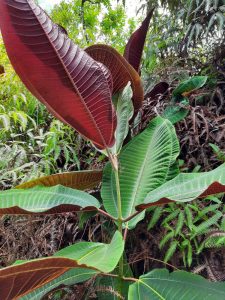Miconia
Miconia calvescens
Report if seen anywhere on Maui

Known from and potential habitat
Species Info General
Family: Melastomataceae
Considered very invasive and is on the Hawaii State Noxious Weed List.
The Division of Forestry and Wildlife of the Hawaii Department of Land and Natural Resources has designated this species as one of Hawaii’s Most Invasive Horticultural Plants.



Identification/Description
- Large tree grows up to 50 feet tall
- Large oval-shaped leaves, green on top, purple underneath, with three main midribs running from stem to leaf-tip
- Small, purple berries containing seeds are spread mainly by birds
- Native to South and Central America, introduced to Hawaii as a garden plant in 1961 and spread around by plant enthusiasts
Impacts
- Forms thick stands, shades out native plants and completely takes over moist and wet forests
- Forms an “umbrella” over the watershed, potentially reducing the amount of rainwater that seeps into the watershed.
- Shallow root systems promote erosion
- Can grow from seed to mature seeding tree in four years. A mature tree can produce about 3 million seeds several times per year. Seeds can remain viable for 10 or more years before sprouting
- Sand-grained sized seeds easily spread by birds and other animals when they eat the fruit. Seeds also spread by people when contaminated dirt or mud sticks to shoes, clothing, equipment, or vehicles
- Introduced to Tahiti in 1937 and has since overwhelmed two-thirds of Tahiti’s forests, and is directly responsible for threatening 25% of their native forest species with extinction
On Maui
Introduced to Maui in the early 1970s at a private nursery and botanical gardens near Hāna. Infestations now occur in the forests near Hāna, Nāhiku, Keʻanae, and Huelo. Today, approximately 37,000 acres throughout East Maui, could potentially contain miconia. Not known from West Maui.
Control info/Info on what MISC does about it
- Coming Soon!
Resources/References
- Miconia calvescens information from Hawaii Invasive Species Committee
- Miconia information from Plant Pono
- KISC’s miconia survey and eradication program
- MISC’s 2009 International Miconia Conference
